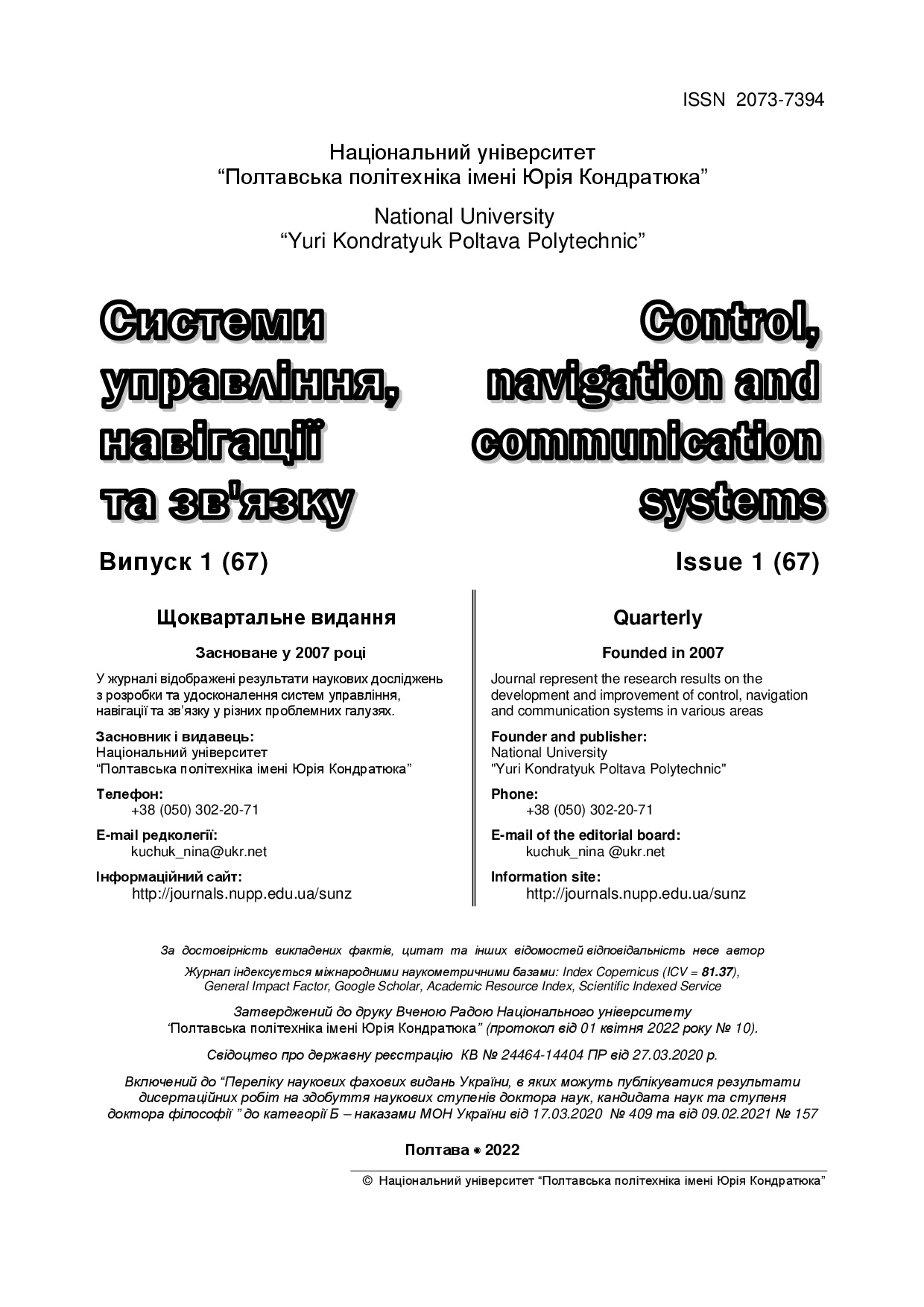METHOD OF IDENTIFICATION OF SPACE IMAGES FOR FORECASTING FOREST FIRES
DOI:
https://doi.org/10.26906/SUNZ.2022.1.013Keywords:
remote sensing of the Earth, geographic information systems, space images, fire identification, "fire" pixelAbstract
Space forest fire monitoring methods help to detect them at an early stage and provide prompt decision-making, which facilitates further monitoring and evaluation of the consequences. The use of space data to monitor fire conditions allows you to quickly and economically obtain objective and independent information to make quick decisions to deal with the elements. The method of fire identification using low-resolution space images obtained from TERRA MODIS and NOAA AVHHR satellites is developed in the work. One of the problematic aspects in the method of determining fires is the masking of clouds and water. Therefore, in order to identify "fire" pixels, it is important to exclude from the analysis fragments of images that are covered with clouds and occupied by water bodies. The algorithm requires a significant increase in radiation in the range microns, as well as the relative observed radiation in the range of 11 microns. The algorithm examines each pixel of the scene, which as a result is assigned one of the following classes: missing data, cloud, water, potentially fire or undefined. Pixels of clouds and water bodies, determined by the technique of masking clouds and water bodies, belong to the classes of clouds and water, respectively. The fire detection algorithm examines only those pixels of the earth's surface that are classified as potentially fire or undefined. The method was implemented using the Power Builder visual programming tool in the Erdas Imaging remote sensing system. As a result of using the identification method, fire-hazardous places in the Chornobyl Exclusion Zone were identified. The use of satellite fire identification is important for the rapid detection of fires in remote forests that are poorly controlled by terrestrial monitoring methods.Downloads
References
Чандра А.М., Гош С.К. Дистанционное зондирование и географические инф. системы. М.: Техносфера, 2010. 312 с.
Журавлева И. Мониторинг пожаров на природных территориях с помощью сервиса FIRMS. Географические информационные системы и дистанционное зондирование. 2010. URL: http://gis-lab.info/qa/firms.html.
Крицук С.Г. Картирование бореальных лесов по спутниковым данным. Современные проблемы дистанционного зондирования Земли из космоса. 2012. Т. 9, № 4. C. 255–264.
Вишняков В.Ю., Ткачук А. Особливості методів визначення температурних аномалій за даними ДЗЗ MODIS (TERRA) та AVHRR (NOAA). Оцінки їх якості. Екологічна безпека та природокористування. 2012. № 10. С. 81–90.
Griffiths P. et al. Forest disturbances, forest recovery, and changes in forest types across the Carpathian ecoregion from 1985 to 2010 based on Landsat image composites. Remote Sensing of Environment. 2014. Vol. 151. P. 72–88.
Токар О., Король М., Гаврилюк С., Цуняк А. Використання супутникових знімків для оцінювання таксаційних показників лісових насаджень. Геодезія, картографія і аерофотознімання. 2017. № 85. С.84–93.
Берестенькова М.В. Интеллектуальная система прогнозирования лесных пожаров. 2012. Т. 30, № 5. С.64–67.
Коморевский В.С., Доррер Г.А. Методика расчёта параметров лесных пожаров как динамических процессов на поверхности Земли с использованием данных космического мониторинга. Вестник СГАУ. 2015. С. 47–50.
Kuchuk H. Mozhaev O., Kuchuk N., Mozhaev M. Multiservise network security metric. 2nd International Conference on Advanced Information and Communication Technologies (AICT). 2017. P.133–136.
Стругайло В.В. Обзор методов фильтрации цифровых изображений. Наука и образование. 2012. № 5. C. 1–12.
Зацерковний В.І., Тішаєв І.В., Шишенко О.І. Застосування матеріалів дистанційного зондування в завданнях моніторингу лісових пожеж і кількісного оцінювання рослинності. Наукоємні технології. 2016. №1. С. 42–47.
Миронюк В.В., Георгіян М.І. Застосування стратифікованої вибірки для регіональної оцінки площі лісів України заданими глобальних карт лісового покриву. Збалансоване природокористування. 2017. № 1. С. 69–74.
Бардиш Б., Бурштинська Х. Використання вегетаційних індексів для ідентифікації об’єктів земної поверхні. Сучасні досягнення геодезичної науки та виробництва. 2015. № 2 (28). С. 82–88.
Білинський Й.Й., Книш Б.П., Кулик Я.А. Обробка та використання мультиспектральних зображень моніторингу. Наукові праці ВНТУ. 2020. №4. С. 1–11.
Morisette J. Giglio L., Csiszar I., Setzer A. Validation of the MODIS active fire detection products derived from two algorithms.Earth Interactions. 2015. Vol. 9. P. 1–29.
Matson M. Dozier J. Identification of subresolution high temperature sources using a thermal IR sensor. Photogrammetric Engineering and Remote Sensing. 2016. № 47. P. 1311–1318.
Seielstad C., Riddering J., Brown S., Queen L., Hao W. Testing the sensitivity of a MODIS-like daytime active fire detection model in Alaska using NOAA/AVHRR infrared data. PhERS. 2016. № 68. P. 831–838.




